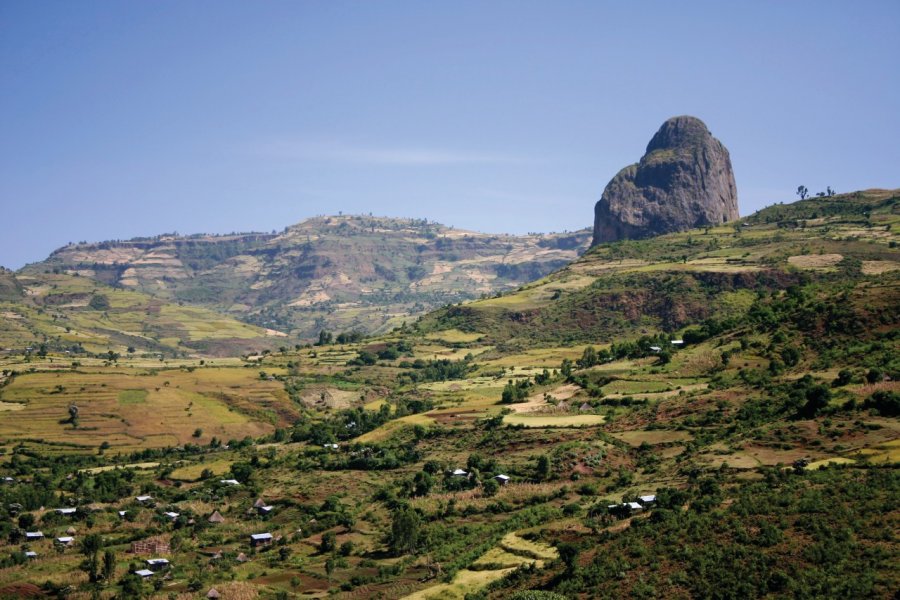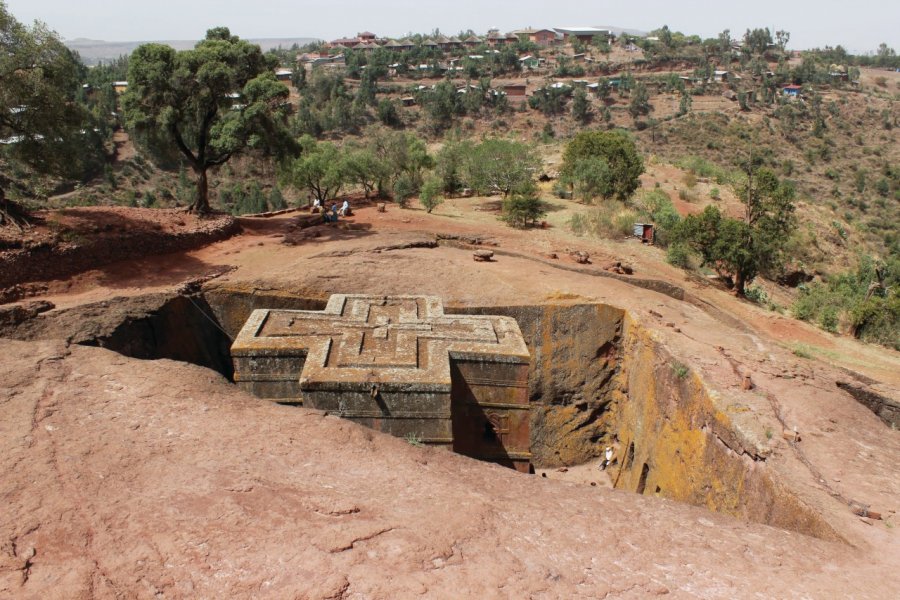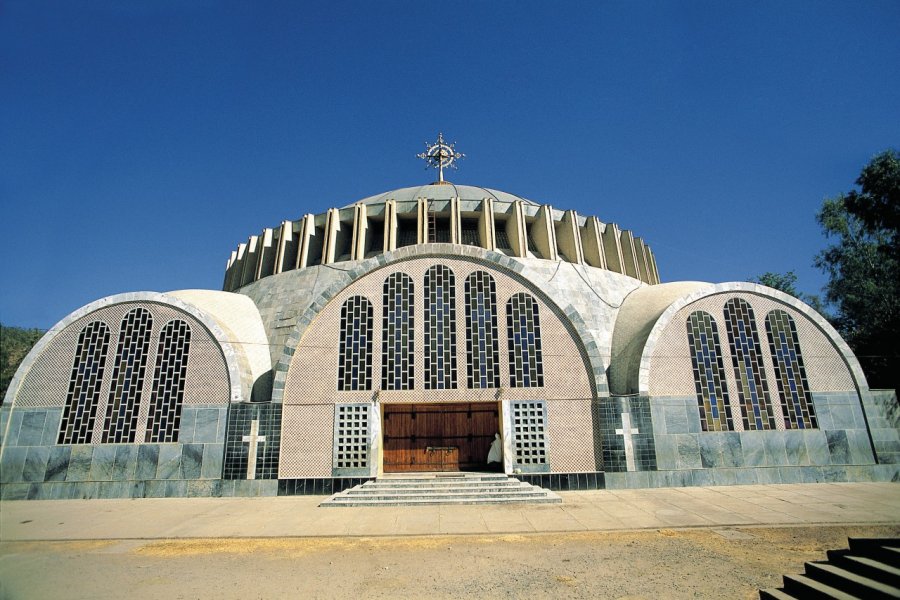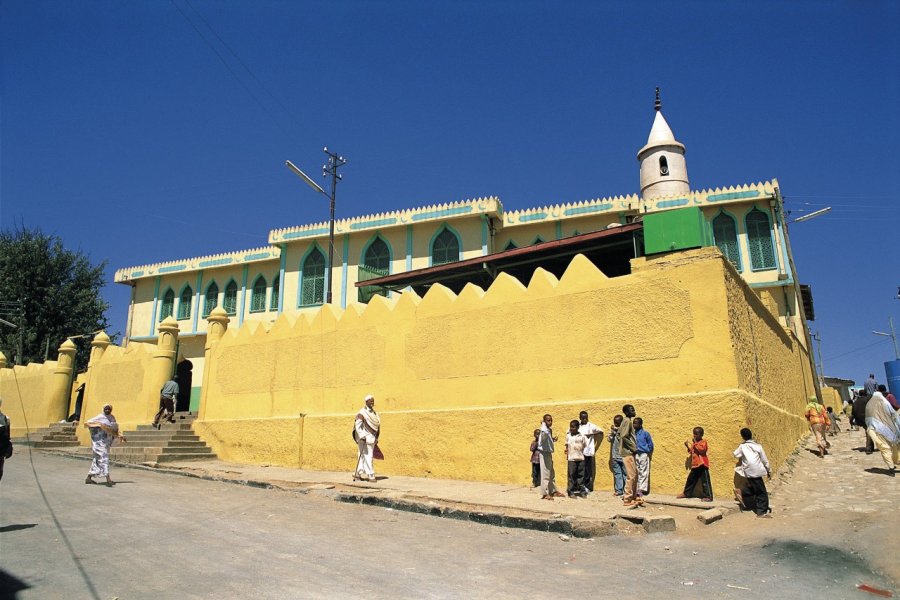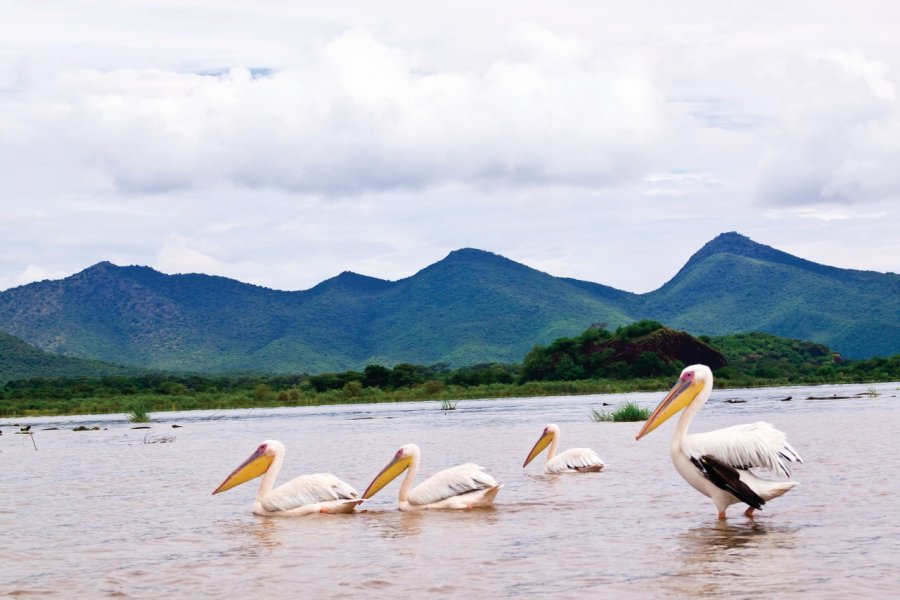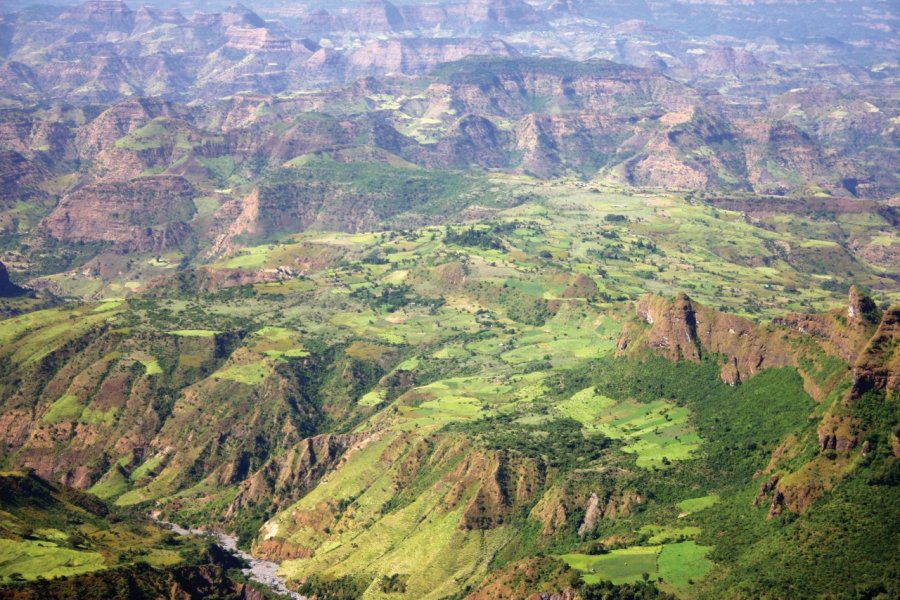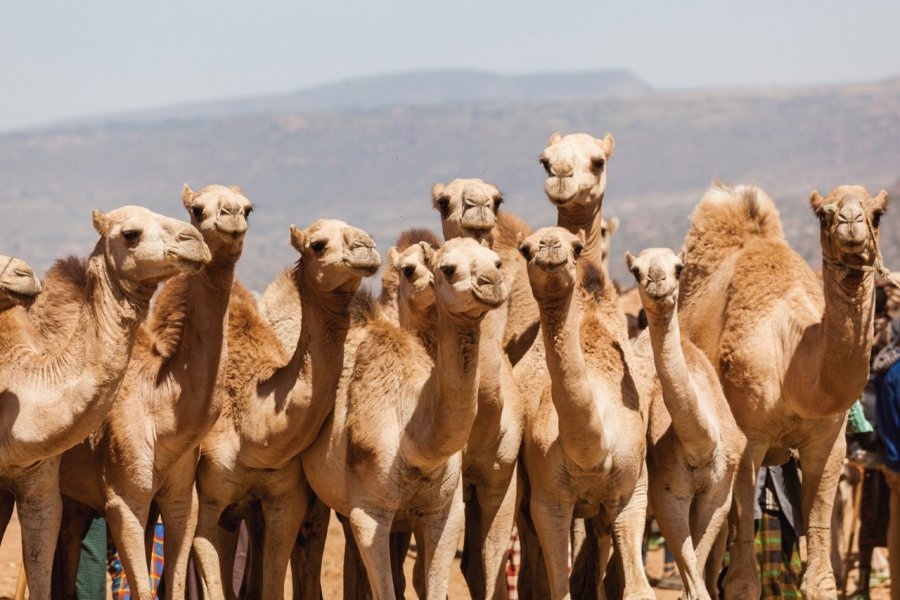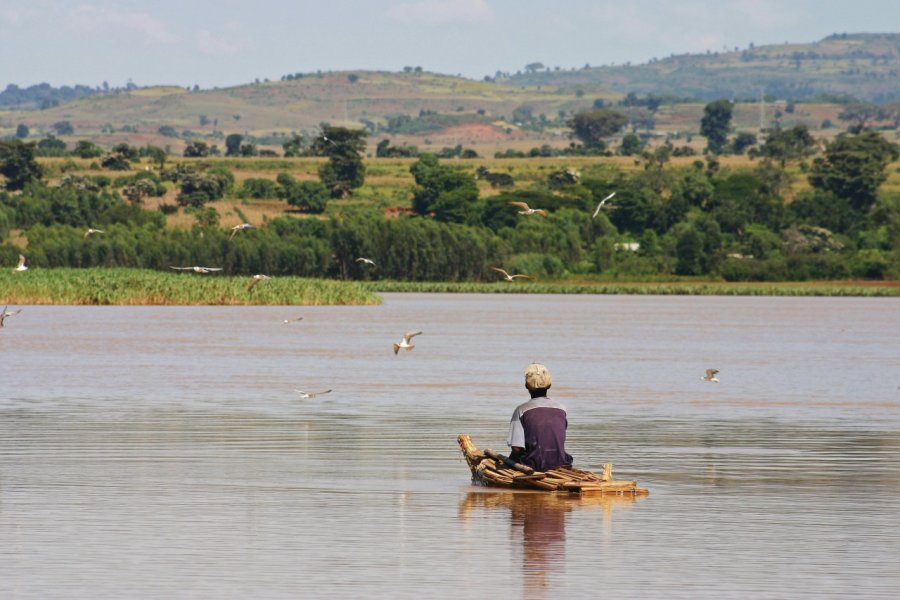What to see, what to do Ethiopia?
The 10 good reasons to go Ethiopia

The Omo Valley
Meeting the people who live in the Omo Valley is one of the highlights of the trip.

Incomparable diversity
Nearly eighty languages and cultures, over two hundred dialects... Ethiopia is multifaceted.

The castles of Gondar
The fortified town with its Unesco-listed castles is a mecca for tourists.

A change of scenery guaranteed
Ethiopia fascinates by the way of life of its Christian, Muslim and animist inhabitants.

The Danakil desert
The Dallol depression in Mars and the Erta Alé volcano are exceptional places to visit.

Mountain trekking
The Simien and Bale mountains offer treks at altitudes of over 4,000 m.

Lalibela
The new Jerusalem is home to eleven 12th-century monolithic churches listed by Unesco.

Addis Ababa
The capital is lively and modern, with new museums and jazz clubs.

Harar
This Muslim city boasts a historic center that has been classified by UNESCO.

An extraordinary culture
Food, music and crafts are a unique Ethiopian heritage.
What to visit Ethiopia?
Good to know to visit Ethiopia
 Timetable
Timetable
Museums, archaeological sites and churches generally open at the same times as in France. Remember to call the priest on his telephone (local guides have everyone's number) or have children fetch him a little early to visit the churches perched in the mountains.
 To be booked
To be booked
Remember to plan your visits to religious sites with a guide well in advance during major festivities: Fasika, Timkat or Christmas, especially in Lalibela, especially if you're looking for a French-speaking guide as they are rare and in high demand.
 Budget & Tips
Budget & Tips
Visiting the churches is not cheap (400 birr for the entrance, but then you have to pay the priest, sometimes the scout, sometimes the people guarding the car in the parking lot, etc.). The tribes of the Omo valley are also quite expensive if you're two people, less so if you're with a large group, and the local guide, in addition to the individual entrance fee, is quite expensive, and compulsory even if you have your own guide in the car. The Danakil desert tour is also quite expensive, but off-season you can negotiate prices more easily.
 Tourist traps
Tourist traps
In Lalibela, watch out for children offering you cheaper entry to the churches (the pass has been raised from US$50 to US$100 per person for three days). Admittedly, you may enter through another entrance, but there are plenty of checks inside and you're bound to get caught! It's also unethical not to pay the official entrance fee, which is also used to fund the conservation of the churches.
In the case of a service, it's essential to agree on everyone's role and to agree on the price beforehand, as it's not uncommon for people to follow you without having been asked for anything, to be totally useless and then ask for something.
 What's very local
What's very local
When it comes to tips for drivers and guides, it's always difficult to give a precise price, and it's up to each individual to judge according to the quality of the service provided and the price negotiated at the outset. The rule is to try to find the right proportion on every occasion. More often than not, Ethiopians will pretend to be disappointed by what they are offered, which is fair enough, but tipping should remain what it is: a spontaneous gesture, not a systematic due. However, there's nothing to stop you being generous with a guide, driver or other person who has been particularly kind and helpful.
